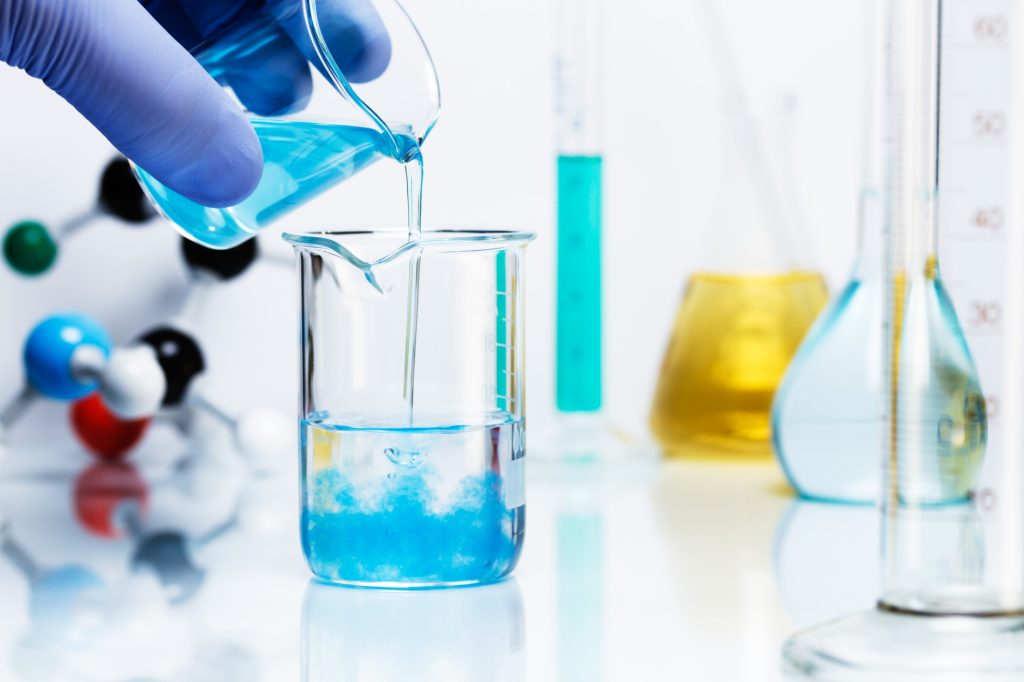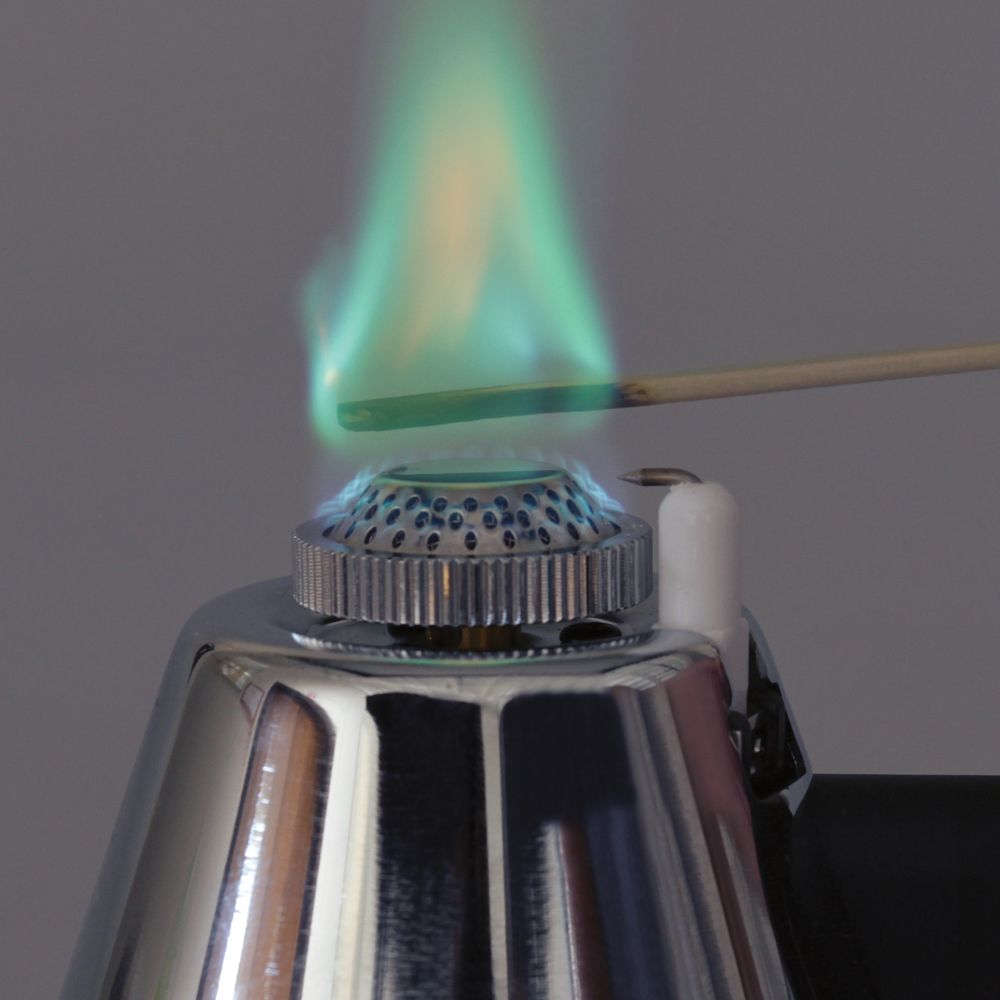Bet you didn’t know that you can cover your chemistry course, start to finish, with Carolina’s popular kits. They provide students with hands-on experiments, model generation, and data analysis, while meeting chemistry course standards. Repeatedly chosen by thousands of teachers, these top sellers get a great reaction from students.
Use this demonstration to reinforce the Bohr model of the atom and explore the phenomenon of flame tests used for identifying certain metals. Burning salt compounds in a flame and observing characteristic colors relates to atomic structure. Students learn the fundamentals of emission spectroscopy as they observe the colorful flames of 6 metallic salts, which leads to understanding the concepts of atomic electron excitation and quantum theory.
Astrobiologists have theorized that life on other planets might be silicon based as opposed to the carbon-based life that exists on Earth. In the lab, students seek to understand this phenomenon by constructing models of the elements based on their chemical and physical characteristics. They then compare their models to the periodic table and 3 alternative periodic tables with the goal of answering the driving question, “What patterns can be identified in the design of the periodic table, and how can those patterns be used to make predictions?”
Students propose a data analysis plan for information received from the Mars Science Laboratory Curiosity rover based on patterns present in the physical properties of ionic and covalent compounds. Students work toward answering the driving question, “How can you make and defend a claim about the types of chemical bonds in compounds based on the patterns present in evidence collected in the lab about their physical properties?”
Introduce and reinforce balancing chemical equations with a hands-on activity using manipulatives to model balancing chemical equations and applying the law of conservation of mass. These tools help students visualize the number of atoms participating in each side of a chemical reaction by modeling the reactants and products.
Some chemical reactions produce no visible change, whereas others produce impressive changes in appearance that clearly indicate to an observer that a chemical change has taken place. With enough knowledge of the characteristics of compounds and the elements from which they form, students can predict the identity of products of a chemical reaction given the reactants, write the chemical formula of a substance given the name of the substance, and use evidence from observations to identify the reactants and products in chemical reactions. Using evidence, students make predictions about properties of the products of 73 different double-replacement reactions.
Students apply their knowledge of chemical reactions and stoichiometry to solve the engineering problem, “What is the best way to modify a chemical reaction to maximize the altitude of a rocket?” Teams complete a prototype activity during which they observe the effects of chemical changes in a chemical system. Next, they create a simple rocket to explore the energy transformations that propel the rocket into the air. During the design challenge, teams brainstorm ways to modify the reaction and the design of the rocket tube to maximize altitude.
Students observe the phenomenon of chemical clock reactions, model these reactions on a particulate level, and calculate reaction rates as the reciprocal of elapsed time for each trial. The effects of concentration, temperature, and catalysts on reaction rates are observed in separate demonstrations.
A helium-filled weather balloon increasing in volume as it rises until it bursts serves as the investigative phenomenon. First, students collect evidence from a series of activities that explore the relationships between the pressure, temperature, and volume of a gas. They make claims about the cause-and-effect relationships they observe between pairs of variables while developing an understanding of Boyle’s, Charles’s, and Gay-Lussac’s gas laws. Second, students use the ideal gas law to construct models of one mole of a gas at STP and at 3,000 meters depth in the ocean.

This kit allows students to model the nuclear process of radioactive decay and explore the concept of half-life using manipulatives and data analysis. During the activity, students analyze why atoms change to gain stability. Students collect and graph data to determine the half-life of their “radioactive” samples to gain insight into nuclear processes and atomic stability.
Students experience the phenomenon of radioactive decay through observing tracks created in a cloud chamber by ionizing radiation as it passes through a cooled, supersaturated alcohol vapor. They illustrate and explain what is happening in the cloud chamber on a particulate level while learning about radioactive decay and writing nuclear equations to model that decay. Students then connect the phenomenon to real-world applications such as nuclear power, nuclear medicine, and archeological dating.
These are our chemistry top sellers. From atomic structure to reactions and reaction rates to radioactive decay, get your students energized with hands-on activities that work and reduce your workload at the same time. Use them to help make your students’ path to success easier. Need more information? We’re always happy to answer your questions and provide a personalized quote.
About The Author
Carolina Staff
Carolina is teamed with teachers and continually provides valuable resources–articles, activities, and how-to videos–to help teachers in their classroom.










